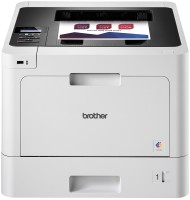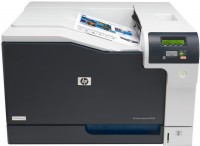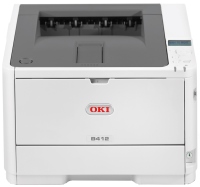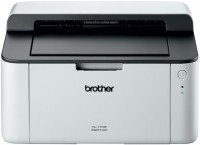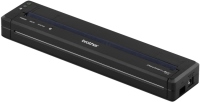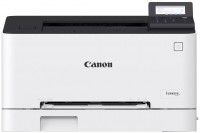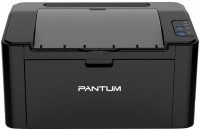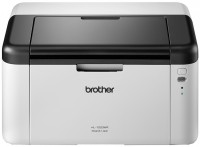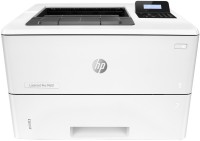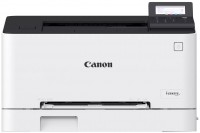Printers Canon
All Printers Advanced filters → |
You might be interested in
Printers: specifications, types
Show all
Product type
— Portable. This category includes printers of small size and weight, equipped with their own autonomous power sources. All this makes it easy to transport the device with you and use it even in the absence of sockets. Often, these models are equipped with a Bluetooth module (see "Data Transfer") for easy connection to a laptop or even a smartphone. On the other hand, the functionality of portable printers is noticeably more modest (for example, the format usually does not exceed 10x15), and the price is higher than that of stationary ones. Therefore, you should specifically look for such a model only if mobility is important to you.
Print formats
The largest paper size that the printer can handle. Most often, the formats are marked from A0 to A10; it is from here that the famous “A4” is taken, denoting a standard landscape sheet. Modern printers can use the following formats:
A2 — 420x594, the size of a newspaper spread. The largest format used in today's consumer-grade printers. In fact, this size is rarely required, and the printers themselves are expensive; therefore models under A2 are usually high-end professional devices.
A3 — 297x420 mm (2 times larger than the landscape sheet, magazine spread). It is mainly used in the business area for printing large letterheads, brochures, announcements, posters, etc.
A4 — 210x297 mm, standard landscape sheet. The most common paper size for home and office use — usually this size is sufficient for non-specialized printing.
A6 — 105x148 mm (a quarter of the landscape sheet). Printers of this format are usually designed primarily for printing photographs — the sheet size is approximately equal to the size of a standard print of 10x15 cm.
A8 — 52x74 mm, an extremely miniature format, which is 1/16 of the popular A4 (comparable to the size of a standard business card — only a little shorter). It is found mainly among portable printers (see "Type"), including models with specific printing tech...nologies (on special paper without the use of dyes).
Note that the media format specified in the specifications is rather conditional: many printer models do not have length restrictions — the main thing is that the media fit into the width, and in some devices the actual maximum size is somewhat different from the standard sizes of a certain format.
A2 — 420x594, the size of a newspaper spread. The largest format used in today's consumer-grade printers. In fact, this size is rarely required, and the printers themselves are expensive; therefore models under A2 are usually high-end professional devices.
A3 — 297x420 mm (2 times larger than the landscape sheet, magazine spread). It is mainly used in the business area for printing large letterheads, brochures, announcements, posters, etc.
A4 — 210x297 mm, standard landscape sheet. The most common paper size for home and office use — usually this size is sufficient for non-specialized printing.
A6 — 105x148 mm (a quarter of the landscape sheet). Printers of this format are usually designed primarily for printing photographs — the sheet size is approximately equal to the size of a standard print of 10x15 cm.
A8 — 52x74 mm, an extremely miniature format, which is 1/16 of the popular A4 (comparable to the size of a standard business card — only a little shorter). It is found mainly among portable printers (see "Type"), including models with specific printing tech...nologies (on special paper without the use of dyes).
Note that the media format specified in the specifications is rather conditional: many printer models do not have length restrictions — the main thing is that the media fit into the width, and in some devices the actual maximum size is somewhat different from the standard sizes of a certain format.
Print type
— Inkjet. With inkjet printing, an image is applied to paper using microscopic drops of ink directed by the print head. This technology is well suited for home use and colour printing: inkjet printers are relatively inexpensive, and print quality can be as high as photographic. On the other hand, such printers are not suitable for printing in large volumes, because. the resource of cartridges is small and the price per page is quite high. In addition, if left idle for several days, ink residue in the print head will dry out, degrading print quality. This can be avoided by using the printer continuously or by using a special cleaning procedure that does not improve cartridge yield.
— Laser. Printing in such printers occurs as follows: a laser beam marks individual sections of the photosensitive drum, toner (powdered paint) sticks to these areas, which is then transferred to paper. Laser printers are more expensive than inkjet printers and are overwhelmingly black and white; at the same time, they provide high quality and permanence of black and white printing at a low cost of the print itself, which is why they are considered optimal for business documents. Colour printing using laser technology is rarely used. inferior in quality to inkjet.
— LED. Printing technology, in many ways similar to laser (see above); the only key difference is the use of a strin...g of LEDs instead of the actual laser. This allows you to keep the main advantages of laser technology (quality and durability of black-and-white prints at their low cost), slightly reducing the cost of the printers themselves.
— Sublimation. In such printers, a special ink ribbon is used to form an image, and the print head is a set of heating elements. During the printing process, the head heats up the ribbon, the ink evaporates and settles already on the paper. Printing takes place in several stages, at the last one a special protective coating is usually applied to the image. This technology allows to achieve high-quality colour reproduction, a very small size of one dot and, as a result, high resolution, and therefore will be used mainly in photo printers.
— Solid ink. As the name implies, the ink for such a printer is initially in a solid state. When printing, they are heated to become liquid and applied to paper through a special heated drum (as in laser printers) or directly (like inkjet printers). Prints from a solid ink printer are distinguished by high-quality colour reproduction and resistance to moisture. On the other hand, the resolution of such devices is lower than that of inkjet printers, and the prints fade quickly enough in the light and are sensitive to scratches. Another feature is that the printer takes a portion of the dye from the cartridge every time it is turned on, and if there was no printing, this dye does not return to the cartridge when it is turned off, but is dumped into a special container as unsuitable for further use. Thus, ideally, a solid ink printer should not be turned off at all. Therefore, such devices are mainly used for professional printing in design and advertising firms.
— Thermal printing. Printing technology based on the effect of heat on sensitive media (usually special paper): the media darkens at the point of heating. Due to this, such printing does not require ink — the only “consumable” is the heat-sensitive paper itself; in addition, the design of the printers themselves is much simpler and more compact than with other technologies. However, on the other hand, the need for special paper and incompatibility with regular paper can create some difficulties; and, usually, there is no talk of colour printing. As a result, thermal printing is mainly used for official documents like checks: in cash registers, ATMs, payment terminals, etc. Printers using this technology are usually compact devices designed for maximum portability. They are well suited for those who often need to print documents out of the office — for example, forwarders, service workers, etc.
— Laser. Printing in such printers occurs as follows: a laser beam marks individual sections of the photosensitive drum, toner (powdered paint) sticks to these areas, which is then transferred to paper. Laser printers are more expensive than inkjet printers and are overwhelmingly black and white; at the same time, they provide high quality and permanence of black and white printing at a low cost of the print itself, which is why they are considered optimal for business documents. Colour printing using laser technology is rarely used. inferior in quality to inkjet.
— LED. Printing technology, in many ways similar to laser (see above); the only key difference is the use of a strin...g of LEDs instead of the actual laser. This allows you to keep the main advantages of laser technology (quality and durability of black-and-white prints at their low cost), slightly reducing the cost of the printers themselves.
— Sublimation. In such printers, a special ink ribbon is used to form an image, and the print head is a set of heating elements. During the printing process, the head heats up the ribbon, the ink evaporates and settles already on the paper. Printing takes place in several stages, at the last one a special protective coating is usually applied to the image. This technology allows to achieve high-quality colour reproduction, a very small size of one dot and, as a result, high resolution, and therefore will be used mainly in photo printers.
— Solid ink. As the name implies, the ink for such a printer is initially in a solid state. When printing, they are heated to become liquid and applied to paper through a special heated drum (as in laser printers) or directly (like inkjet printers). Prints from a solid ink printer are distinguished by high-quality colour reproduction and resistance to moisture. On the other hand, the resolution of such devices is lower than that of inkjet printers, and the prints fade quickly enough in the light and are sensitive to scratches. Another feature is that the printer takes a portion of the dye from the cartridge every time it is turned on, and if there was no printing, this dye does not return to the cartridge when it is turned off, but is dumped into a special container as unsuitable for further use. Thus, ideally, a solid ink printer should not be turned off at all. Therefore, such devices are mainly used for professional printing in design and advertising firms.
— Thermal printing. Printing technology based on the effect of heat on sensitive media (usually special paper): the media darkens at the point of heating. Due to this, such printing does not require ink — the only “consumable” is the heat-sensitive paper itself; in addition, the design of the printers themselves is much simpler and more compact than with other technologies. However, on the other hand, the need for special paper and incompatibility with regular paper can create some difficulties; and, usually, there is no talk of colour printing. As a result, thermal printing is mainly used for official documents like checks: in cash registers, ATMs, payment terminals, etc. Printers using this technology are usually compact devices designed for maximum portability. They are well suited for those who often need to print documents out of the office — for example, forwarders, service workers, etc.
Output type
The number of colours the printer produces when printing. To date, there are monochrome(black and white) and colour(providing full-colour printing) printers. The former are considered optimal for documents and other official materials that do not require colour; the latter allow you to create a full-fledged image, but such printing is much more expensive, so you should pay attention to them only if the colour format is critical.
Number of colors
The color palette that the printer can print. A large number of colors is required for high-quality photo printing and obtaining color prints with many shades. The standard is 4 colors.
Max. resolution
The maximum resolution of the image to be printed. It is usually indicated by two numbers denoting the number of dpi (DPI) horizontally and vertical: 600x600, 1200x600, 1200x1200, 2400x600, 2400x1200, 4800x600, 4800x1200, 4800x2400, 5760x1440, 9600x600, 9600x2400. The detail of the image depends on this parameter - the higher the resolution, the more fine details the printer is able to convey and the better their image will be. High print resolution is important, first of all, when working with graphic material; low resolution is sufficient for high-quality text display. So
First page print time
The time from the receipt of a print command to the exit from the printer of the first page printed in black and white, in other words, how long after pressing the "Print" button, the user will receive the first page. Most often indicated for draft (fastest) print mode, higher quality will take longer. You should pay attention to this parameter if you often need to print small documents (on one or several pages) on the printer.
Mono print
The black and white print speed provided by the printer. It should be noted that this parameter is often indicated for low quality when the device is running at maximum performance; at a higher quality (even at standard), the actual speed can be noticeably lower, so you should choose with a certain margin. Also note that high speed significantly affects the price, power consumption and noise level. Therefore, it does not always make sense to chase maximum performance — for simple applications (for example, at home or in a small office), a relatively slow and inexpensive device may be the best choice.
As for specific values, speeds up to 20 ppm are considered relatively low, 20 – 30 ppm — average, 31 – 40 ppm — decent, and the fastest models are capable of delivering more than 40 pages per minute.
As for specific values, speeds up to 20 ppm are considered relatively low, 20 – 30 ppm — average, 31 – 40 ppm — decent, and the fastest models are capable of delivering more than 40 pages per minute.
Colour print
Colour print speed provided by the printer. Usually, the specifications give speed at low quality, when performance is highest; on standard and especially high settings, the print speed can be noticeably lower, so it’s worth choosing with a certain margin. It is also worth considering that high speed significantly affects the price, power consumption and noise level. Therefore, it does not always make sense to chase maximum performance — for simple applications and small print volumes, a relatively slow and inexpensive device may be the best choice.
The "slowest" colour printers today are capable of delivering less than 10 pages per minute. A more decent value is considered 10 – 20 ppm, a speed of more than 20 ppm can already be called quite good, and in the fastest models this figure exceeds 30 ppm.
The "slowest" colour printers today are capable of delivering less than 10 pages per minute. A more decent value is considered 10 – 20 ppm, a speed of more than 20 ppm can already be called quite good, and in the fastest models this figure exceeds 30 ppm.
Photo print
Printer print speed in photographic (highest) quality. Unlike other similar parameters, in this case the speed is usually indicated for a 10x15 sheet (A6, the most popular format for photographs). In addition, photo printing speed is not expressed in pages per minute, but in seconds per page, because. printing takes a lot of time. This option is worth paying attention to if you plan to print photos frequently.
Duplex printing
Automatic duplex printing function .
In this mode, the user does not need to manually turn over each sheet and send it to print on the second side — this will be done by the printer mechanism, and materials printed on both sides will immediately enter the output tray. This not only saves time, but also eliminates confusion: a person can make a mistake and print one of the sides “upside down”, automation does not allow such errors.
In this mode, the user does not need to manually turn over each sheet and send it to print on the second side — this will be done by the printer mechanism, and materials printed on both sides will immediately enter the output tray. This not only saves time, but also eliminates confusion: a person can make a mistake and print one of the sides “upside down”, automation does not allow such errors.
Monthly resource
The maximum number of pages the printer can print in a month while still operating at full capacity.
Mono cartridge resource
The maximum number of pages that the printer's ink (toner) can print. The value is rather conditional, in reality the deviations from the norm are very large (up or down). In inkjet printers, the cartridge life is relatively small and amounts to several hundred prints. In laser and LED devices, the bill is already in the thousands.
Colour cartridge resource
The maximum number of pages that the printer's ink (toner) can print. The value is rather conditional, in reality the deviations from the norm are very large (up or down). In inkjet printers, the cartridge life is relatively small and amounts to several hundred prints. In laser and LED devices, the bill is already in the thousands.
OPC drum resource
The photoconductor is used in laser and LED printers (see Printing technology); during use, due to constant contact with paper, scratches and abrasions appear on it, which significantly affect print quality. In some printers, the photoconductor is part of the cartridge — in this case, its resource is equal to the resource of the cartridge, the drum is installed and changed along with it. In other models, the drum is installed separately.
The drum yield is the maximum number of pages that a printer with a drum unit can print without any noticeable loss in quality. It is usually specified for printers with a separate drum. The resource is a rather approximate value, because depends on the specific conditions of using the printer, and in fact it may differ from the claimed value both in one direction and in the other.
The drum yield is the maximum number of pages that a printer with a drum unit can print without any noticeable loss in quality. It is usually specified for printers with a separate drum. The resource is a rather approximate value, because depends on the specific conditions of using the printer, and in fact it may differ from the claimed value both in one direction and in the other.
Built-in CISS
The printer has a built-in CISS — a continuous ink supply system.
The essence of such a system is that the ink for printing is not in the cartridge, but in external containers, from where it is supplied to the print head as needed. This provides a number of advantages over traditional cartridges. Firstly, CISS containers hold much more ink and need to be refilled less frequently. Secondly, refilling the CISS in terms of one print is much cheaper than "recharging" and even more so replacing the cartridge. Thirdly, dyes of different colours are refilled into such a system separately, and when ink of one colour is exhausted, it is enough to replenish only their stock (whereas some colour cartridges need to be changed completely, even if only one of the colours has run out).
Note that CISS can be installed separately; however, the factory setting is more reliable, such devices are less likely to fail. At the same time, this feature significantly increases the cost and complicates the design of the printer. Therefore, it is worth paying attention to models with built-in CISS first of all if you plan to print often and in large quantities.
The essence of such a system is that the ink for printing is not in the cartridge, but in external containers, from where it is supplied to the print head as needed. This provides a number of advantages over traditional cartridges. Firstly, CISS containers hold much more ink and need to be refilled less frequently. Secondly, refilling the CISS in terms of one print is much cheaper than "recharging" and even more so replacing the cartridge. Thirdly, dyes of different colours are refilled into such a system separately, and when ink of one colour is exhausted, it is enough to replenish only their stock (whereas some colour cartridges need to be changed completely, even if only one of the colours has run out).
Note that CISS can be installed separately; however, the factory setting is more reliable, such devices are less likely to fail. At the same time, this feature significantly increases the cost and complicates the design of the printer. Therefore, it is worth paying attention to models with built-in CISS first of all if you plan to print often and in large quantities.
Ink type
— Pigment. Ink based on pigments — solid dyes, which are diluted in the form of microparticles in a liquid filler to a state of suspension. Compared to more popular water-based inks, these formulations are noticeably more expensive, and the finished image may turn out to be somewhat less bright (compared to printing with water-based dye on the same printer). On the other hand, pigment ink gives higher detail, which is especially important for photo printing. In addition, finished images resist moisture better and do not fade as quickly in bright light — this resistance is not enough for outdoor use, but indoors such prints can be stored for a very long time.
- Water soluble. Inks based on water-soluble dyes allow achieving high realism of color reproduction in color printing, they are well absorbed into the deep layers of paper and are cheaper than pigment ink. Also, water-soluble ink does not dry as quickly in the cartridge or print head of the printer. They are recommended for use with inkjet paper - ordinary thin paper strongly absorbs dropsy, which can cause ink to show through on the back of the sheet. At the same time, water-soluble inks are afraid of moisture and direct exposure to ultraviolet rays - when water gets in, the paint “floats” on paper, and it fades under sunlight.
– Pigmented / water soluble. Some printers have a print head that allows you to print with two types of ink at once. A common case is when their black cartridge is filled wi...th pigment ink, and the color one is filled with water-soluble ink.
- Water soluble. Inks based on water-soluble dyes allow achieving high realism of color reproduction in color printing, they are well absorbed into the deep layers of paper and are cheaper than pigment ink. Also, water-soluble ink does not dry as quickly in the cartridge or print head of the printer. They are recommended for use with inkjet paper - ordinary thin paper strongly absorbs dropsy, which can cause ink to show through on the back of the sheet. At the same time, water-soluble inks are afraid of moisture and direct exposure to ultraviolet rays - when water gets in, the paint “floats” on paper, and it fades under sunlight.
– Pigmented / water soluble. Some printers have a print head that allows you to print with two types of ink at once. A common case is when their black cartridge is filled wi...th pigment ink, and the color one is filled with water-soluble ink.
Cartridges
The number of ink cartridges required for the full operation of the printer. In black and white devices, usually, one cartridge is installed. For colour printing, at least 4 colours are required (CMYK colour scheme), however, cartridges in such devices can be installed as 4 (one for each colour), or only 2 — black and "colour". The latter is essentially three multi-coloured cartridges in one case; This design somewhat reduces the cost, but creates certain inconveniences: when the supply of ink of one colour is exhausted, the entire colour cartridge becomes inoperative. However, this disadvantage is not critical if the possibility of refueling is provided.
Printers designed for more than 4 cartridges are also available. This design means that this model uses one of the extended colour schemes; this, on the one hand, contributes to high-quality colour reproduction, on the other hand, it significantly affects the price. In the most advanced photo printers, the number of cartridges can reach 9.
Printers designed for more than 4 cartridges are also available. This design means that this model uses one of the extended colour schemes; this, on the one hand, contributes to high-quality colour reproduction, on the other hand, it significantly affects the price. In the most advanced photo printers, the number of cartridges can reach 9.
Cartridge model
The types of cartridges (both black and white and colour) used in the printer. Some printer models are able to work with "non-native" cartridges, but this feature usually refers to undocumented features, and the manufacturer's warranty covers only specific types of cartridges. So use "non-native" models with caution.
Larger capacity cartridge
The printer cartridge is designed for a certain service life (resource). However, the machine's compatibility with different cartridges sometimes allows you to install a higher capacity cartridge, which can result in more pages being printed. It is these models that have the option to expand the print resource that are included in this paragraph.
Data transfer
— Connection to PC (USB). Possibility of wired connection with PC via USB interface. Do not confuse this function with the USB connector described above: in this case, the peripheral device is the printer itself. This option is the most popular way of wired connection to a computer nowadays: there are USB ports in almost any PC or laptop.
— Network connection (LAN). Possibility of wired connection to a local computer network through a standard LAN connector (using an Ethernet cable). With this connection, the printer becomes available to all computers on the network — this is very convenient for offices, co-working spaces and other places where different people have to use printing from different computers. Note that the connection to the network can be carried out both through one of the computers of this network, and through a common router; in the second case, the printer remains operational regardless of which computers on the network are currently turned on. Compared to another connection option — Wi-Fi — a wired connection is less convenient due to the need to run a cable; however, it is cheaper, and the connection is as reliable as possible.
— Wi-Fi. A wireless technology that was originally designed to work with computer networks, but nowadays is also used for direct communication between devices ( Wi-Fi Direct, see...below). Usually, printers with Wi-Fi can work as network devices — when communication is carried out via LAN, and all computers on the network have access to the printer; but the possibility of direct connection of gadgets is less common. However, the specific functionality of Wi-Fi anyway needs to be specified separately.
— Card Reader. Slot for reading memory cards, usually, with the function of direct printing (see above). In this case, this function is convenient primarily because memory cards are widely used in modern photo and video cameras; thus, the card reader allows you to quickly and conveniently print the footage — just remove the card from the camera and install it in the printer. However, this function can be useful for exchanging data with other devices — for example, laptops; and in some printer models it is even possible to work in the mode of an external card reader for a PC.
— USB. USB connector that allows you to connect various external peripherals to the printer. Most often used for direct printing from flash drives and other drives, however, it can also be used for other purposes — for example, for updating firmware, diagnosing problems, etc. Do not confuse this function with connecting to a PC via USB when the role of a peripheral device is played by the printer itself (see below for details).
— Bluetooth. Direct wireless communication technology between different devices. In printers, it is used mainly for the traditional purpose — to receive materials sent for printing from external devices. One of the advantages of such a connection is that it allows you to work not only with computers, but also with portable gadgets like smartphones and tablets: built-in Bluetooth modules for such gadgets are almost mandatory, but wired connection methods are most often not available at all. Yes, and it can be more convenient to communicate with a PC or laptop in this way: Bluetooth does not require wires and works confidently at a distance of about 10 m.
— NFC. Short-range wireless technology — up to 10 cm. In printers, it is usually used as an auxiliary function to simplify communication via Wi-Fi and Bluetooth: instead of setting up the connection manually, just bring an NFC gadget to the printer and confirm the connection. And in some models, in this way (by bringing the device to the printer), you can even immediately send materials for printing; To do this, usually, you need to install a branded application on an external gadget.
— Wi-Fi Direct. A feature found on models with built-in Wi-Fi modules (see above). Direct support allows you to connect other Wi-Fi devices (laptops, smartphones, cameras, etc.) to such a printer directly, without using a router and a local network. This can be especially convenient if there is no network equipment, or if it needs to be additionally configured. The functionality of the Wi-Fi Direct connection is generally similar to Bluetooth (see above); the main difference is that Wi-Fi provides a faster and more reliable connection, with longer range. This is especially true when transferring large amounts of data — for example, sending large documents for printing. In addition, such a connection is better suited for direct printing from cameras — Wi-Fi is traditionally used for wireless connection in this technique.
— AirPrint. Same function as above (Wi-Fi Direct). Allows you to connect to the device without using a router. However, in this case, we are talking about connecting Apple equipment — iPhone phones, tablets, Mac laptops.
— Network connection (LAN). Possibility of wired connection to a local computer network through a standard LAN connector (using an Ethernet cable). With this connection, the printer becomes available to all computers on the network — this is very convenient for offices, co-working spaces and other places where different people have to use printing from different computers. Note that the connection to the network can be carried out both through one of the computers of this network, and through a common router; in the second case, the printer remains operational regardless of which computers on the network are currently turned on. Compared to another connection option — Wi-Fi — a wired connection is less convenient due to the need to run a cable; however, it is cheaper, and the connection is as reliable as possible.
— Wi-Fi. A wireless technology that was originally designed to work with computer networks, but nowadays is also used for direct communication between devices ( Wi-Fi Direct, see...below). Usually, printers with Wi-Fi can work as network devices — when communication is carried out via LAN, and all computers on the network have access to the printer; but the possibility of direct connection of gadgets is less common. However, the specific functionality of Wi-Fi anyway needs to be specified separately.
— Card Reader. Slot for reading memory cards, usually, with the function of direct printing (see above). In this case, this function is convenient primarily because memory cards are widely used in modern photo and video cameras; thus, the card reader allows you to quickly and conveniently print the footage — just remove the card from the camera and install it in the printer. However, this function can be useful for exchanging data with other devices — for example, laptops; and in some printer models it is even possible to work in the mode of an external card reader for a PC.
— USB. USB connector that allows you to connect various external peripherals to the printer. Most often used for direct printing from flash drives and other drives, however, it can also be used for other purposes — for example, for updating firmware, diagnosing problems, etc. Do not confuse this function with connecting to a PC via USB when the role of a peripheral device is played by the printer itself (see below for details).
— Bluetooth. Direct wireless communication technology between different devices. In printers, it is used mainly for the traditional purpose — to receive materials sent for printing from external devices. One of the advantages of such a connection is that it allows you to work not only with computers, but also with portable gadgets like smartphones and tablets: built-in Bluetooth modules for such gadgets are almost mandatory, but wired connection methods are most often not available at all. Yes, and it can be more convenient to communicate with a PC or laptop in this way: Bluetooth does not require wires and works confidently at a distance of about 10 m.
— NFC. Short-range wireless technology — up to 10 cm. In printers, it is usually used as an auxiliary function to simplify communication via Wi-Fi and Bluetooth: instead of setting up the connection manually, just bring an NFC gadget to the printer and confirm the connection. And in some models, in this way (by bringing the device to the printer), you can even immediately send materials for printing; To do this, usually, you need to install a branded application on an external gadget.
— Wi-Fi Direct. A feature found on models with built-in Wi-Fi modules (see above). Direct support allows you to connect other Wi-Fi devices (laptops, smartphones, cameras, etc.) to such a printer directly, without using a router and a local network. This can be especially convenient if there is no network equipment, or if it needs to be additionally configured. The functionality of the Wi-Fi Direct connection is generally similar to Bluetooth (see above); the main difference is that Wi-Fi provides a faster and more reliable connection, with longer range. This is especially true when transferring large amounts of data — for example, sending large documents for printing. In addition, such a connection is better suited for direct printing from cameras — Wi-Fi is traditionally used for wireless connection in this technique.
— AirPrint. Same function as above (Wi-Fi Direct). Allows you to connect to the device without using a router. However, in this case, we are talking about connecting Apple equipment — iPhone phones, tablets, Mac laptops.
Cloud print
Cloud print service supported by the printer. Specified only if the device is capable of working with cloud services directly without connecting to a PC.
The general principle of such printing is that documents sent for printing are stored on a server on the Internet. Thus, the availability of the printer is not limited to the local network — you can send documents for printing from anywhere in the world where there is access to the World Wide Web. In addition, cloud-based printers make it easy to share with others.
The general principle of such printing is that documents sent for printing are stored on a server on the Internet. Thus, the availability of the printer is not limited to the local network — you can send documents for printing from anywhere in the world where there is access to the World Wide Web. In addition, cloud-based printers make it easy to share with others.
Screen
The type of screen provided in the design of the printer. This parameter is indicated by two points — colour (monochrome or colour display), as well as the absence or presence of a touch screen(if only colour is indicated, then the screen is not touch).
Chroma determines the features of the image on the display. Monochrome (black and white) screens allow you to display a lot of different information, and are inexpensive. On the other hand, such a display is poorly suited for viewing drawings and photographs sent for printing — for such purposes it is better to use more expensive, but more functional colour screens.
As for touch displays, they provide additional convenience in management and expand its capabilities. Various controls can be displayed on such a screen — sliders, lists, text menus, etc.; operating them with touches on the display is easier than using traditional control panels with hardware buttons. On the other hand, the presence of a sensor affects the cost of the display, and it makes sense to use this feature mainly in advanced printers with an abundance of additional functions.
Chroma determines the features of the image on the display. Monochrome (black and white) screens allow you to display a lot of different information, and are inexpensive. On the other hand, such a display is poorly suited for viewing drawings and photographs sent for printing — for such purposes it is better to use more expensive, but more functional colour screens.
As for touch displays, they provide additional convenience in management and expand its capabilities. Various controls can be displayed on such a screen — sliders, lists, text menus, etc.; operating them with touches on the display is easier than using traditional control panels with hardware buttons. On the other hand, the presence of a sensor affects the cost of the display, and it makes sense to use this feature mainly in advanced printers with an abundance of additional functions.
Screen size
The diagonal of the display installed in the printer.
The larger the display, the more convenient it is to use, the better you can see the image on it. Large-screen printers are especially useful when you need to view a variety of graphics on the screen. In addition, a large diagonal is highly desirable for touch screens (see "Display"). On the other hand, the larger the display, the more expensive it is and the more space it takes up, despite the fact that a small diagonal is enough for basic tasks and settings.
The larger the display, the more convenient it is to use, the better you can see the image on it. Large-screen printers are especially useful when you need to view a variety of graphics on the screen. In addition, a large diagonal is highly desirable for touch screens (see "Display"). On the other hand, the larger the display, the more expensive it is and the more space it takes up, despite the fact that a small diagonal is enough for basic tasks and settings.
Additionally
— Voice assistants. Printer support for one or more voice assistants. The most popular voice assistants among printers today are:
— Printing on optical discs. Ability to use the printer to print directly on recordable optical discs (CD-R/RW, DVD-R/RW). Thus, after recording a disc, you can put on its non-working surface (non-mirror side used for inscriptio...ns) an inscription or image as you wish. Often these printers come with software that makes it easy to create layouts for printing on disks. Please note that only specially designed discs can be used for printing.
— Printing on roll paper. Possibility of using for printing paper in rolls. Thus, the print size is limited by the width and length of the roll, which allows you to create materials other than ordinary A* sheets. Large-format paper and photo paper can be supplied as rolls.
- Amazon Alexa
- Google Assistant
- Microsoft Cortana
— Printing on optical discs. Ability to use the printer to print directly on recordable optical discs (CD-R/RW, DVD-R/RW). Thus, after recording a disc, you can put on its non-working surface (non-mirror side used for inscriptio...ns) an inscription or image as you wish. Often these printers come with software that makes it easy to create layouts for printing on disks. Please note that only specially designed discs can be used for printing.
— Printing on roll paper. Possibility of using for printing paper in rolls. Thus, the print size is limited by the width and length of the roll, which allows you to create materials other than ordinary A* sheets. Large-format paper and photo paper can be supplied as rolls.
Grammage (min)
The minimum grammage on which the printer can produce normal print quality. Density is expressed in grams per square metre; accordingly, the thicker the paper, the thicker it is, and the greater the difference between the minimum and maximum paper weights, the greater the range of materials the printer can work with. The standard, most common A4 office paper has a density of 80 g/m² and is supported by the absolute majority of printers. If you use paper that is lighter than the minimum weight for this printer, you may experience problems such as wrinkled sheets or multiple sheets being picked up by the printer at the same time.
Grammage (max)
The maximum grammage on which the printer can produce normal print quality. For details about the weight, see "Paper Weight (Min)". An attempt to print on paper of a greater density than the maximum for this printer will, at best, end in nothing (the printer simply cannot capture the sheet), at worst, it can lead to a sheet jam in the printer, followed by the hassle of removing it.
RAM
The amount of internal memory installed in the printer.
The main purpose of such memory is to store tasks sent for printing. This gives various additional features: printing when the computer is turned off, continuing to work after troubleshooting, pausing the process and resuming at will, etc. The more memory, the wider these printer capabilities (in particular, large volumes allow you to store more tasks ).
Note that we are talking about the built-in memory; if the printer also has a hard drive (see below), its capacity is specified separately.
The main purpose of such memory is to store tasks sent for printing. This gives various additional features: printing when the computer is turned off, continuing to work after troubleshooting, pausing the process and resuming at will, etc. The more memory, the wider these printer capabilities (in particular, large volumes allow you to store more tasks ).
Note that we are talking about the built-in memory; if the printer also has a hard drive (see below), its capacity is specified separately.
Drive capacity
Thanks to its large capacity, the built-in hard drive can be used not only to store the print queue, but also as a shared network storage — many printers with a hard drive have a LAN port. At the same time, installing a hard drive significantly increases the cost of the device, and the mentioned features are not required so often, mainly for professional use. Therefore, this feature is typical mainly for high-performance premium printers. Accordingly, the capacity of the required drive in this case depends on the volume of the enterprise.
Clock Speed
The clock speed of the processor installed in the printer. Theoretically, a higher clock speed improves performance and, accordingly, the actual speed of operation. However, in fact, these indicators depend on so many additional factors that the processor frequency is a purely reference parameter, and when choosing, it is worth focus on more “close to life” characteristics — print speed, first sheet output time, etc.
Feed tray
The number of sheets of paper that the input tray can hold—that is, the tray from which blank paper is taken for printing. Note that this amount is usually specified based on standard office paper with a density of about 80 g/m²; if thicker paper is used for printing, fewer sheets will fit in the feed tray.
Output tray
The number of sheets of paper that the output tray can hold — the tray where the finished media is delivered. Usually, this amount is specified for standard office paper with a density of 80 g/m²; if you use thicker sheets, the actual capacity of the tray will be less (conversely, thinner sheets may fit more).
Noise level
Approximate noise level generated by the printer during normal operation. The decibels in which the noise level is expressed is a non-linear value, so it is easiest to evaluate this indicator using comparative tables. The quietest printers give out about 35 dB — this is the volume of a conversation in a whisper, such noise will not stand out even in a quiet library reading room. A volume of 40 dB approximately corresponds to a conversation at an average volume, according to sanitary standards, this is the upper limit of permissible constant noise in residential premises during the day. For offices, the border is slightly higher — 55 – 60 dB, this is the volume of a conversation in raised tones. And the most powerful and heavy models give out up to 70 dB — this is comparable to a noisy city street; if such a printer is planned to be used frequently, it is advisable to install it in a separate room.
In general, lower noise levels make the device more comfortable to use, but may affect performance and/or price.
In general, lower noise levels make the device more comfortable to use, but may affect performance and/or price.
Power consumption
The maximum power consumed by the printer during operation. The lower the power consumption, the less energy the printer consumes, the more economical it is. On the other hand, devices with lower power consumption are often less performant than their more high consumption counterparts. And for the same performance, a more economical printer is likely to cost more, but with heavy use, it can pay off in energy savings.

